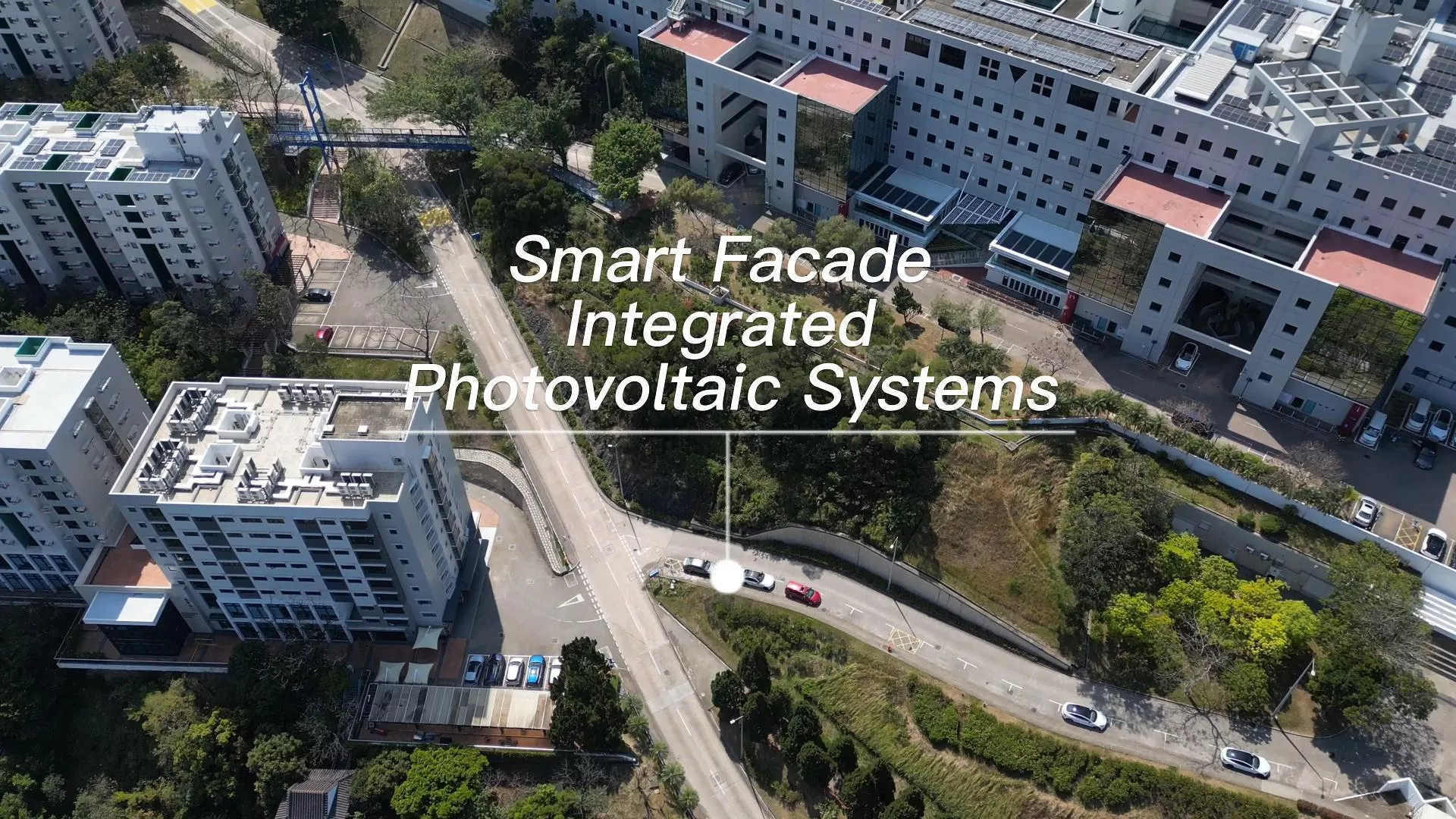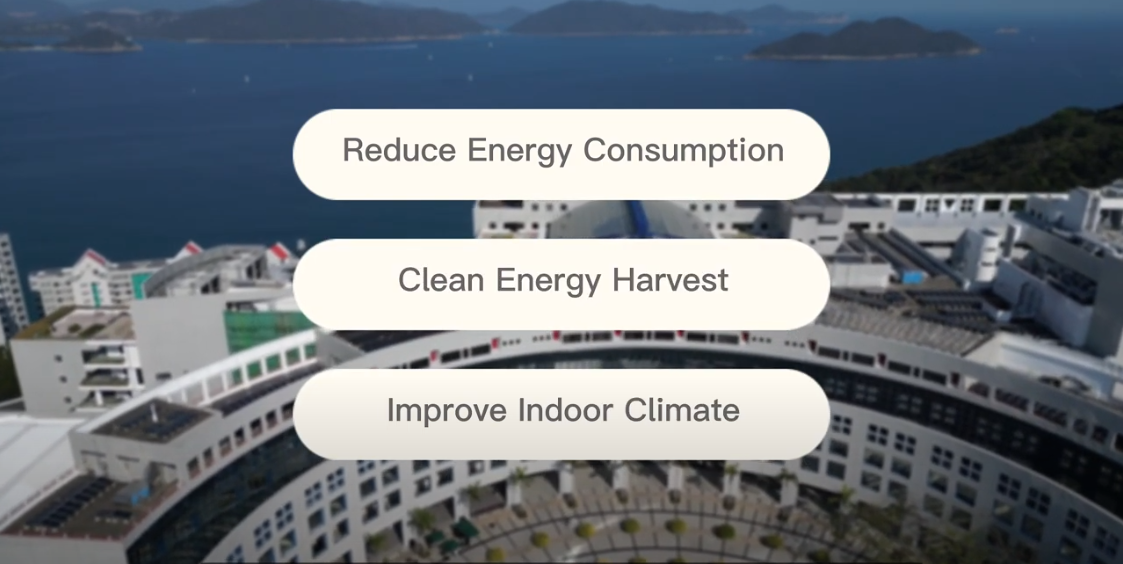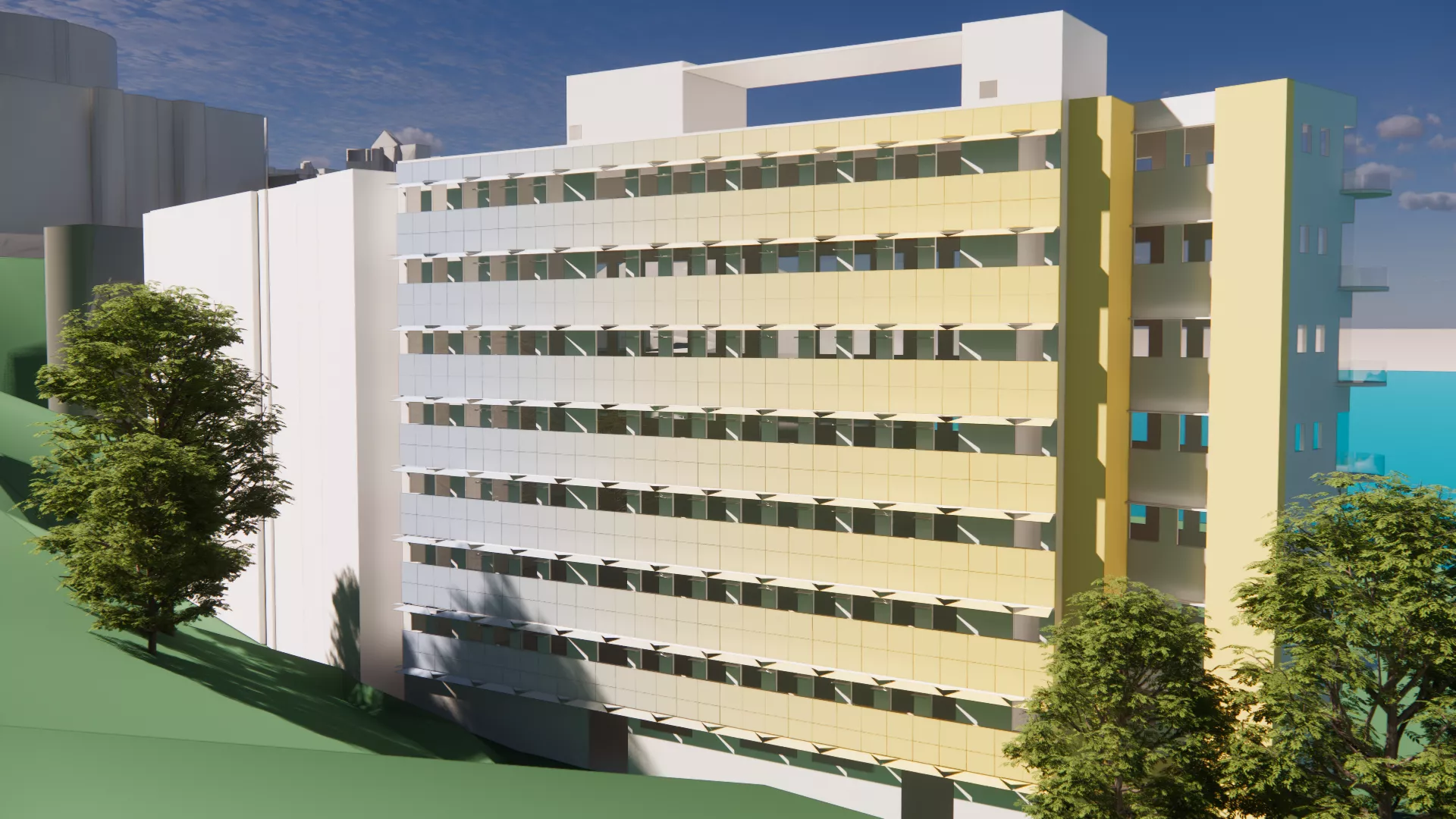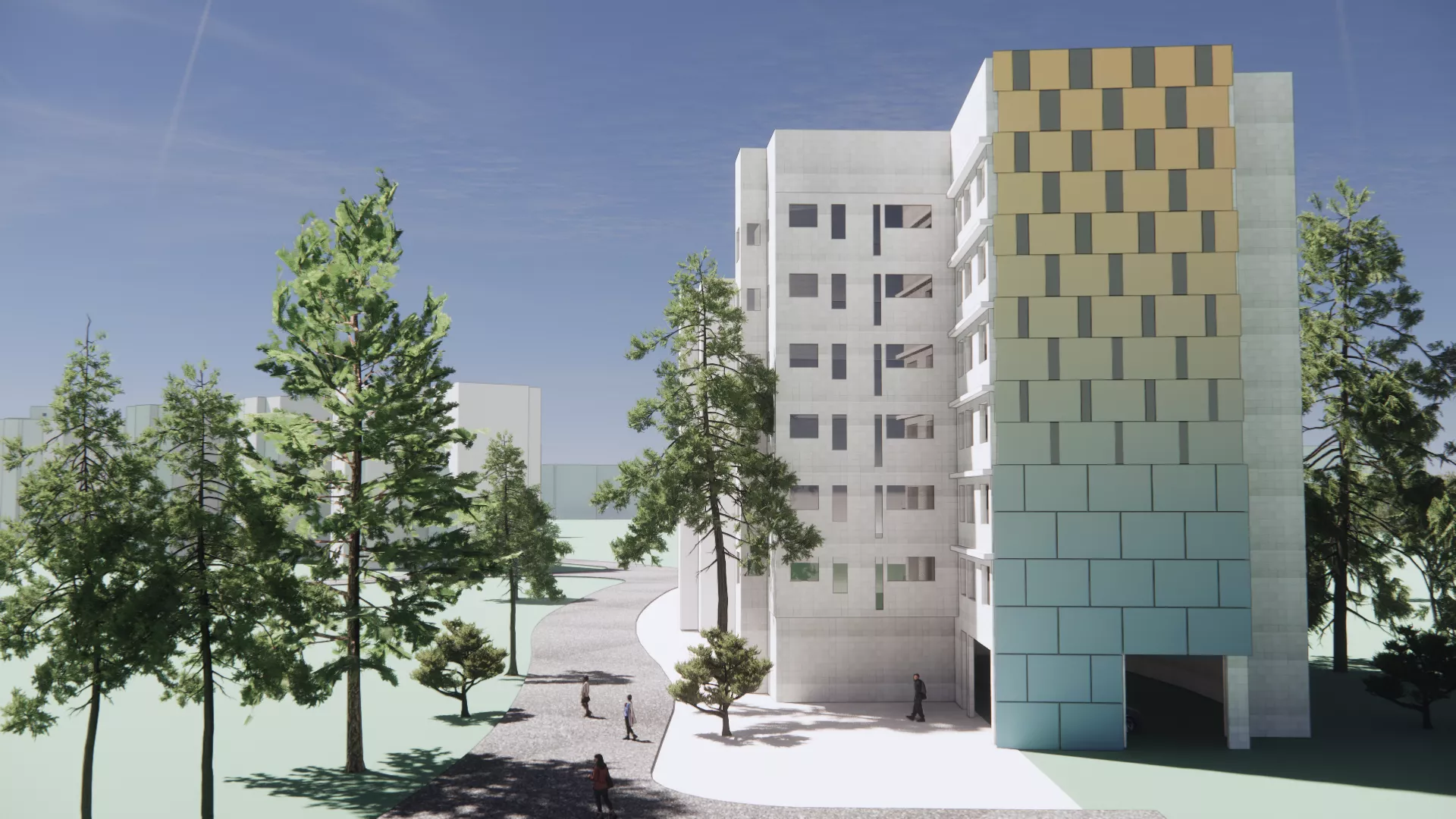Smart Building Integrated Photovoltaic Systems Toward Zero Energy HKUST Campuses
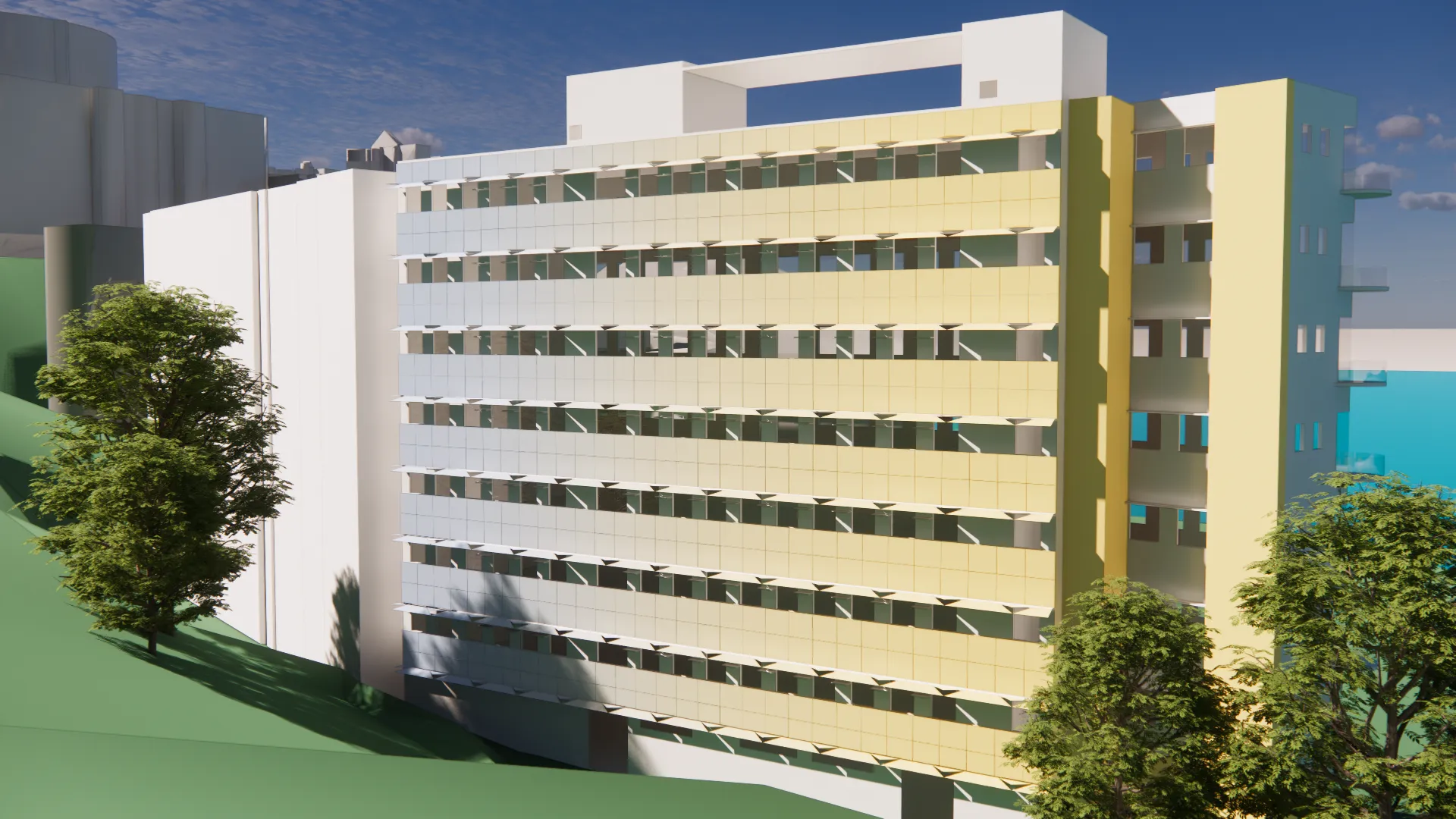
Smart Building Integrated Photovoltaic Systems Toward Zero Energy HKUST Campuses
The project aims to investigate the solar energy harvesting potential on opaque façade areas and apply more advanced clean energy systems like tailored colored façade integrated photovoltaic (FIPV) on campus buildings. It will also improve energy efficiency by passively cooling the systems, using radiative cooling and self-cleaning coatings techniques.
What is the problem this project is trying to address?
Buildings are the key contributor to greenhouse gas emissions and the primary electricity consumer in Hong Kong, including campus buildings. Although many roofs on campus buildings are already utilized for building adaptive photovoltaic (BAPV), more advanced clean energy systems should be applied throughout the HKUST campus to achieve Zero-energy campus performance.
Since many buildings were designed and built 30 years ago, there is also an urgent demand to update the building envelopes systematically to enhance energy efficiency and make the building smarter for climate adaptability.
How does this project support our sustainable smart campus as a living lab vision?
From an energy/technology aspect, integrated PV systems will provide clean energy and reduce greenhouse gas emissions. Renovation of glazing areas will reduce energy consumption and provide a better indoor climate. The project is also economically advantageous with its short-term benefits from Feed-in-Tariff and cost savings on electricity consumption, covering the investment cost, while the integrated PV systems have a lifespan of at least 25 years and recyclable components. Besides, the project can benefit the environment by reducing 30 Tons of CO2-e emissions annually. From a social perspective, it is beneficial for occupants’ health by improving indoor daylight. The project will also enhance and test related technology and products, supporting the PV and building industry in the transition era.
Additionally, the project will use advanced high-efficiency colored PV materials, apply the smart coating to the FIPV system, and integrate smart sensors into the PV and shading systems to enable them to respond to the climate.
